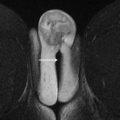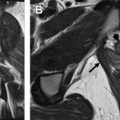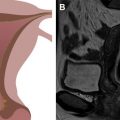MR imaging is a useful adjunct imaging modality for evaluating women presenting with acute lower abdominal/pelvic pain who have negative or inconclusive sonographic findings. In pregnant women, although obstetric complications are of prime concern, gastrointestinal pathologies also warrant careful attention, and MR imaging is often useful in refining the diagnosis. In nonpregnant women, gynecologic pathologies and gastrointestinal pathologies are of major concern, and may necessitate evaluation with MR imaging. Knowledge of imaging features in the appropriate clinical setting helps in early and accurate diagnosis, enabling timely management for better clinical outcomes.
Key points
- •
Lower abdominal/pelvic pain is one of the commonest presenting complaints for emergency department visits in women of all ages.
- •
Imaging plays a key role in diagnosis, triage, and management of these patients with appropriate clinical and laboratory correlation.
- •
Although pelvic sonography remains the imaging modality of choice in initial assessment of these women, MR imaging has proven to be an excellent adjunct modality in evaluation of indeterminate or equivocal sonographic findings, especially in pregnant women.
- •
Radiologists should be familiar with commonly encountered pelvic emergencies in pregnant and nonpregnant women, including the spectrum of MR imaging features, to make correct and timely diagnoses and facilitate appropriate patient management.
Stay updated, free articles. Join our Telegram channel

Full access? Get Clinical Tree






